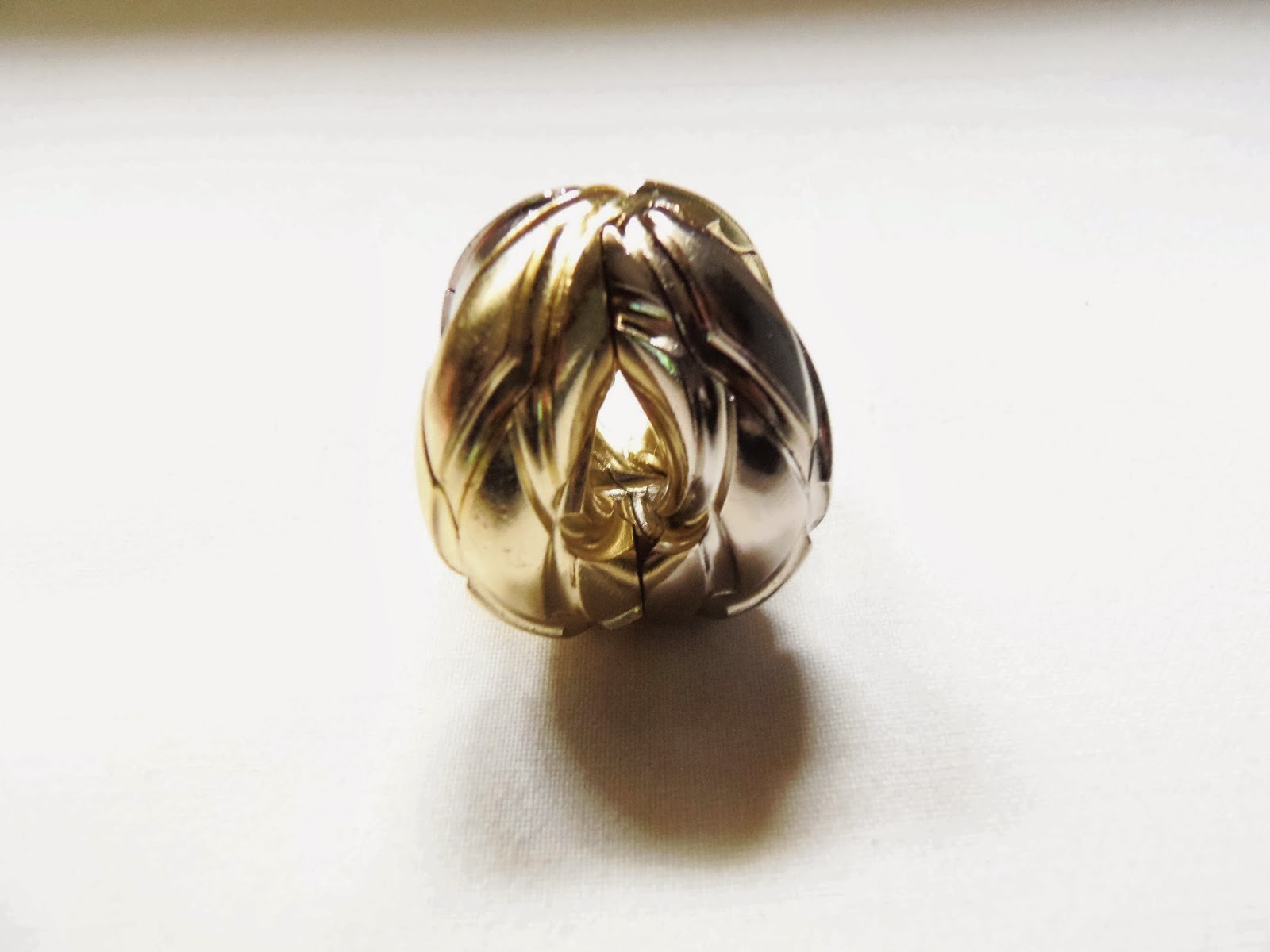 |
| (Click to Enlarge) |
Ever since I started reviewing
Siebenstein-Spiele's puzzles I always pointed to the fact I liked their designs because it reminded of Jean Claude Constantin's puzzles. There are many similarities between their work, as they use mostly wood as the main material for their creations, including various types of wood in a single puzzle. Ultimately, their designs seem unique, but there have been a couple of designs lately that makes me think their similarities are way too obvious to be a coincidence.
My only explanation is that both designers, Constantin and Jürgen Reiche, have been working closely together on their designs a few times.
Pento, a puzzle produced by Siebenstein-Spiele uses the same basic concept introduced by Constantin in his puzzle
Doppelschicht. Or maybe it's the other way around... I'm not sure if this is a good or a bad thing, considering the high quality and originality of both designers' work.
Like mentioned above, one of the best qualities of Siebenstein's puzzles - or Constantin's, for that matter - is their presentation, always using different wood colors to emphasize the overall design. Pento is no different, using three different wood tones for the pieces plus the glazed light tone for the tray. The metal screws also work great for contrast against the wood, adding the final touch of elegance into the design.
 |
| (Click to Enlarge) |
The name Pento is given because of the nature of its pieces, which consists of six double pentominoes. Yes, double pentominoes. Just like its cousin Doppelschicht, each of Pento's pieces consist of two pentominoes hinged by a screw. This allows the pieces to be rotated in any direction, making it difficult to find their correct arrangement once out of the tray. You have to think like you're solving two puzzles simultaneously, and that's exactly what you'll be doing - solving two packing puzzles at the same time.
Fortunately for me, I found the Pento puzzle easier to solve than the Doppelschicht - I can't believe I can write the word without a typo - but it was still quite challenging. Believe it or not, the position of the screws work more in your favor than against. They're strategically placed in one of the piece's units, and depending on their position on the tray, not every position will work for both pentominoes that comprise a single piece. You can use that to your advantage, making the puzzle easier as you go with less and less possible arrangements.
Of course, like any other packing puzzle, you have to rely heavily on trial and error, but with six pieces - well, twelve actually, they're double pentominoes - I reckon it won't be a problem for a seasoned puzzler. Still, it took me about an hour to solve it. The manufacturer rates it as a level 5/7 - strange scale - which I believe is pretty accurate.
 |
| (Click to Enlarge) |
Closing Comments:
I'm still on the fence about the obvious similarities between both designers' puzzles. It seems like déjà vu, and doesn't give you a satisfactory feeling like you're facing something completely new. Not every puzzle has to look completely different. I know that. But I expect much more from both designers.
Availability: The
Pento puzzle is available at Sloyd for €17.50.






















